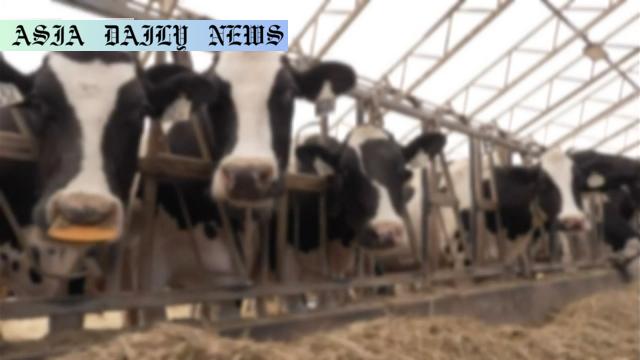Bird Flu developments highlight concerning risks of drug resistance tied to delayed treatment, as revealed by recent research.
Delayed treatment of bird flu may enable drug resistance in H5N1 virus.
Study led by Professor Kawaoka Yoshihiro shows faster onset of treatment eliminates resistance risks.
Novel antivirals like Xofluza may need dosage adjustments for effectiveness.

Understanding Bird Flu and Its Recent Rise in the United States
The highly pathogenic bird flu strain H5N1 has rapidly gained attention due to its spread in dairy farms across the United States since early 2024. Experts like Professor Kawaoka Yoshihiro from the University of Tokyo Pandemic Preparedness, Infection and Advanced Research Center have raised alarms about the virus’s potential to develop drug resistance if treatment is delayed. Bird flu, traditionally seen as an avian disease, has shown a concerning zoonotic leap into cattle populations, with a documented 41 cases of humans contracting the virus from cows.
This alarming scenario poses a dual challenge: managing the health of animal populations while safeguarding human lives. H5N1’s rapid multiplication rate raises the stakes as delayed treatment potentially accelerates the emergence of drug-resistant strains. To address this, researchers have been studying Xofluza (baloxavir marboxil), one of the antiviral drugs effective against traditional flu viruses, to ascertain its efficacy against the zoonotic form of H5N1 spreading among dairy cattle.
Key Research Findings Highlight the Risks of Delayed Intervention
The research conducted on mice infected with the bovine H5N1 virus revealed critical findings. When Xofluza was administered within an hour of infection, the chances of survival were significantly higher, and no drug-resistant viruses were observed. Conversely, administering the same drug as late as 24 to 48 hours post-infection resulted in grim outcomes: death in most cases, accompanied by the discovery of drug-resistant strains in multiple samples.
The study highlights an urgent need for better response strategies. Adjustments in treatment protocol, such as extended administration durations and higher dosages, may need to be explored to prevent fatalities and curb resistance, especially during outbreaks among humans. The findings underscore the importance of initiating early treatment in mitigating drug resistance risks posed by the rapid replication rate of H5N1.
Implications for Pandemic Preparedness
The implications of these findings are vast, particularly in a world still grappling with the pandemic vulnerabilities exposed by COVID-19. The zoonotic potential of H5N1, coupled with its fast mutation rates, adds another layer of complexity to pandemic preparedness protocols. Traditional antiviral strategies may no longer suffice, prompting a reevaluation of how treatments can be administered swiftly and effectively.
Moreover, these challenges extend to public health systems, necessitating improved disease surveillance, cross-sector collaboration between veterinary and human medicine, and robust emergency protocols. Clinical research on alternative drugs and combination therapies should also be priorities, given the demonstrated limitations of Xofluza under certain conditions. The urgency to preemptively address H5N1’s challenges is starkly evident from these findings.
Looking Forward: Strategies to Combat Drug Resistance in Bird Flu
The battle against H5N1 and its drug-resistant strains demands a multifaceted approach. Timely intervention, perhaps coupled with distribution networks that ensure antiviral availability within the first critical hours of infection, is paramount. Diagnostic tools need to be optimized for rapid detection, ensuring patients can start treatment without undue delays.
On a larger scale, the findings urge global health organizations to prioritize research into universal vaccines targeting multiple influenza strains. The allocation of resources to monitor and combat zoonotic diseases like H5N1 has never been more essential. Collaborative efforts between nations, frequent reassessment of treatment guidelines, and proactive innovations in drug development will form the backbone of this fight.



Commentary
Heightened Awareness of Emerging Zoonotic Threats
The recent findings about the H5N1 bird flu’s potential to acquire drug resistance owing to delayed treatment serve as a wakeup call. It is imperative that both researchers and policymakers take these warnings seriously, especially in light of the ongoing risks posed by zoonotic diseases. Public knowledge around such issues also needs to expand, ensuring that communities are prepared for outbreaks originating not just in avian populations, but also in other animals that humans interact with daily, such as dairy cattle.
The Need for Accelerated Treatment Protocols
The study’s results clearly illuminate the critical window of opportunity in treating infections caused by H5N1 with antivirals like Xofluza. Administering antiviral treatment within the first hour of infection proved to be highly effective in preventing both fatalities and the development of drug-resistant strains. This reinforces the necessity of prompt responses and efficient antiviral distribution mechanisms in containing outbreaks within local populations before they reach a wider scale.
Proactive Strategies for Combating Future Outbreaks
Looking ahead, global infectious disease management strategies must account for these findings. Research funding should target the creation of more robust antiviral drugs and combination therapies tailored to rapidly mutating viruses like H5N1. Cross-disciplinary collaboration among epidemiologists, veterinarians, and healthcare professionals will be essential to predict, prevent, and manage outbreaks of infectious diseases in both animals and humans.
Ultimately, this research serves as both a testament to the advances in virology and a stark reminder of the challenges ahead. It underscores the delicate balance required between scientific rigor, timely intervention, and a global commitment to public health safety. By addressing zoonotic threats with urgency and innovation, we can safeguard against the next pandemic before it takes hold.